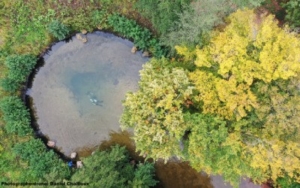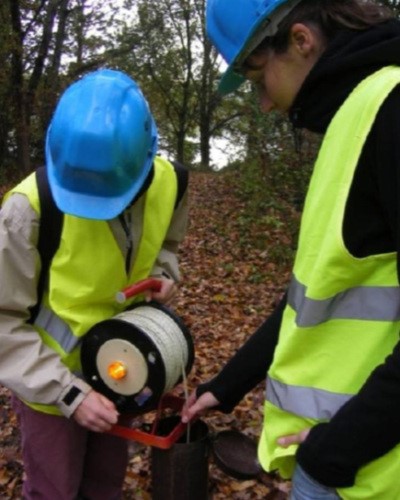contact us
Coordination : Hervé Jourde / Naomi Mazzilli
Data Base : Juliette Fabre
The alignment of various observation sites along major karst conduits makes it possible to sample groundwater of various underground residence times. Monitoring an artificial tracer from one point to another in the system makes it possible to study the hydro-chemical evolution of a water mass in an underground environment as a function of its residence time, dilution phenomena, mixing, and reactions within the system. The Val d’Orléans site offers unique direct access to study how the saturated zone functions.
The alignment of the different observation sites, along the major karst conduit, allows the groundwater to be sampled for different dwell times underground. Monitoring an artificial tracer from one point to another in the system makes it possible to study the hydro-chemical evolution of a body of water in the underground environment as a function of residence time, dilution phenomena, of mixing and reactions in the system. The Orléans Valley site offers unique direct access to the study of the operation of the saturated zone.
Such a device allows transversal research around three major scientific axes:
The in situ study of the flows and kinetics of chemical reactions in the pipe
The validation of new geophysical characterization approaches or hydrogeological modeling approaches adapted to karst environments
The analysis of the vulnerability of the aquifer to environmental changes by studying the long-term evolution of the chronicles initiated more than 100 years ago.

Drone photo of the source of Bouillon and divers @Daniel Chailloux


The long-term follow-ups provided by the observatory within the framework of SNO KARST are as follows: